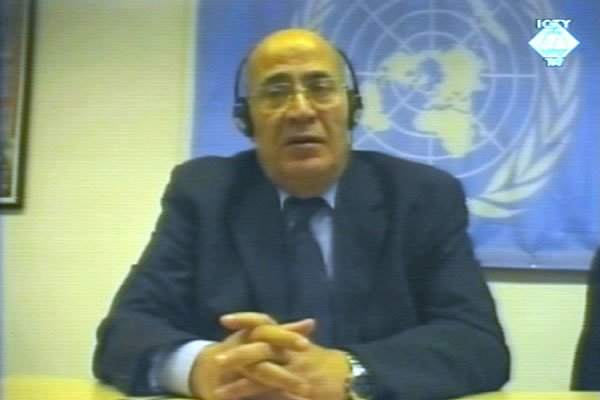Home
IMPRESSIONS AND REALITY OF THE SIEGE OF SARAJEVO
In the cross-examination of Dr. Youssef Hajir, Radovan Karadzic contested his claims that there were about 16,000 injured and 1,000 killed inhabitants of Dobrinja. Karadzic contended there were a lot of personal ‘impressions’ and less actual information in the witness’s statement. The witness argued that those weren’t impressions but ‘reality’ of the siege in Sarajevo, and Dobrinja in particular – where children aged seven or eight years were shot right through the heart by snipers
 Youssef Hajir, witness at the Radovan Karadzic trial
Youssef Hajir, witness at the Radovan Karadzic trial ‘It was a really sad time, people were desperate, so many young people yet no one ever laughed, it was horrible’, said Dr. Youssef Hajir, chief surgeon of the makeshift war hospital in Dobrinja, as he described the situation in that Sarajevo neighborhood. Dobrinja was almost entirely encircled by the Serb forces.
In Karadzic’s view, the figure Dr. Hajir gave in his book published after the war – 16,000 persons who were treated in the hospital in Dobrinja – was ‘an exaggeration’. As Karadzic remarked, some of them were injured as they passed through Dobrinja on their way to or from the city through the tunnel running underneath the airport runway. Dr. Hajir confirmed it, noting that the passage through the makeshift tunnel was ‘dangerous and difficult’.
Karadzic tried to show that the tunnel was ‘used frequently’ because its main purpose was providing supplies to the enemy army and linking up the troops in Sarajevo with those in other areas under the control of the BH Army. As Dr. Hajir replied, the troops passed through the tunnel, as did large number of civilians, to get food or for other reasons. However, as Dr. Hajir noted, ‘nobody went there on a whim’.
Karadzic went on to claim that throughout the war the Serb side offered that a corridor be opened for civilian traffic, but the BH Army didn’t want it. Karadzic suggested that in his statement to the OTP, Dr. Hajir gave a lot of personal impressions, whereas real life was different. As an example, Karadzic quoted from Dr. Hajir’s statement where he said that he ‘had an impression that the Serbs just wanted to kill people and that’s why they never took Dobrinja’.
‘But how to explain sealing the city off hermetically and at the same time opening fire on the city’, the witness responded, adding that Dobrinja was a residential neighborhood. ‘How can you fire if you know that children, elderly and women live there, and they are helpless?’, Dr. Hajir asked the accused, noting some children aged just seven or eight were hit by snipers straight through the heart. ‘These are not impressions but facts that happened around you’, the witness concluded.
Karadzic said he shared Dr. Hajir’s repugnance of such incidents. The accused contends that he personally ‘condemned and demanded investigations’ of incidents in which fire was opened on civilians. Karadzic doubts 1,000 civilians were killed in Dobrinja in the course of 1,200 days of the siege; as Karadzic put it, ‘whole months’ went by without any casualties. Dr. Hajir agreed that the figures were not precise and that there may have been ‘more or less’ casualties. Regardless of that, Dr. Hajir contended that ten to fifteen injured persons were brought in the hospital every day.
Noting that there were 50,000 to 70,000 Serbs living in Sarajevo during the war, Karadzic asked the witness if he believed ‘we would harass them just to harm the other side’. ‘Practice shows that it was so’, the witness replied, explaining that many Serbs were casualties of artillery and sniper fire from the VRS positions.
Radovan Karadzic’s trial continues tomorrow with a new witness.
Linked Reports
- Case : Karadzic
- 2010-11-01 ‘ALIJA, HEAR OUR MACHINE GUNS FIRE…’
- 2010-10-29 WITNESS: WE DIDN’T FASLSIFY EVIDENCE
- 2010-10-28 WHO VIOLATED CEASEFIRES IN SARAJEVO?
- 2010-11-03 KARADZIC TRIAL ADJOURNED FOR A MONTH
- 2010-11-04 MORE MONSTROUS THAN CRIME ITSELF
- 2010-11-05 ‘LET THERE BE JUSTICE, THOUGH THE WORLD PERISH’
